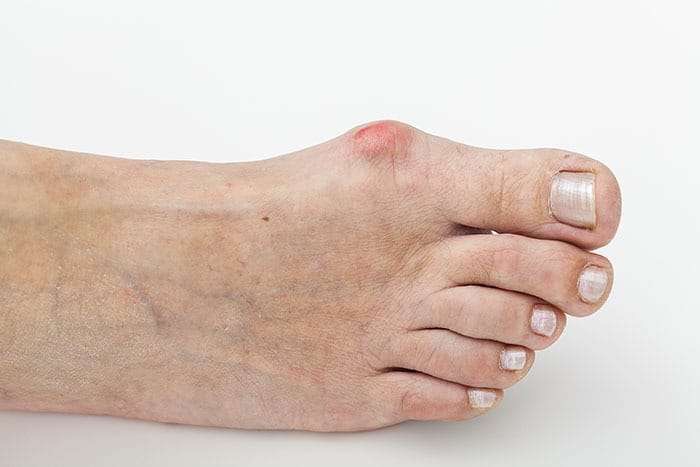A bunion refers to an abnormal bulge or protrusion that forms at the base of the big toe. This condition occurs as a result of the misalignment of the joint, leading to the enlargement of the metatarsophalangeal (MTP) joint, which is located at the base of the big toe.
Bunions are more than just a cosmetic issue or minor discomfort – they can significantly affect the quality of life by causing considerable pain and difficulty in walking. Understanding the nature of bunions is key to seeking appropriate treatment and maintaining optimal foot health.
The Inside Story on Bunions: Hallux Abducto Valgus Unveiled
Hallux Abducto Valgus (HAV), or in simpler language, bunions, are terms many of us find baffling and complex. Let’s simplify it. The ‘hallux’ is the anatomical name for the big toe. When this toe shifts alignment and leans towards the other toes, it results in what we commonly term as a bunion. This misaligned, deviated position of the big toe is synonymous with ‘hallux valgus’ or ‘hallux abducto valgus’.
In this condition, the joint at the base of the big toe enlarges, leading to a visible and often painful lump.
Beneath the Surface
Bunions, contrary to widespread belief, are not just random foot maladies. They represent an outer symptom of an underlying foot mechanical issue. The pivotal causes behind bunions are usually the type of foot anatomy we inherit and the kind of footwear we choose. As the big toe bends towards the rest of the toes, the lump, or the bunion, enlarges. Over time, this may instigate discomfort, stiffness, and potentially arthritis.
Recognizing When to Consult a Podiatrist
While it’s true that the only definitive cure for a bunion is surgical intervention, there are various ways in which its symptoms can be managed effectively. This is where the role of a Podiatrist becomes critical. As an expert in foot care, a Podiatrist can offer personalized treatment options to relieve discomfort and prevent further progression of the bunion. The following are some of the ways in which a Podiatrist may be able to help:
- Therapies to enhance the joint’s range of motion;
- Treatment of secondary issues such as corns and calluses;
- Suggestions for shoe modifications to alleviate pressure on the affected area;
- Prescription of custom-made orthotics to address joint instability;
- Demonstration and guidance on exercises aimed at preserving joint flexibility.
The Vital Role of Podiatrists in Foot Health
Foot health is often overlooked until a problem becomes debilitating. However, proactive measures can significantly help prevent and manage foot problems. Podiatrists play a crucial role in this aspect, providing expert advice, preventive techniques, and effective treatments for an array of foot-related conditions.
Ignoring a foot issue, such as a bunion, without seeking professional advice or treatment, can lead to serious health implications. Timely intervention not only relieves current discomfort but can also aid in preventing the worsening of the condition.
Conclusion
In conclusion, bunions are a common foot condition that can cause pain, discomfort, and limited mobility, same as sprained ankle. Understanding the causes, symptoms, and treatment options for bunions is crucial for effectively managing this condition. Whether through non-surgical methods like footwear modifications and orthotics or surgical intervention for severe cases, individuals with bunions can find relief and improve their quality of life.


